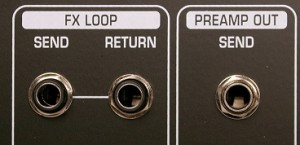No, I’m not being rude! There’s certain advice that I often find useful to give out to would be customers. A sort of ‘before you call the doctor’ guide.
Disclaimer
Any actions you take based on the information contained upon this page you take at your own risk. I cannot be held responsible for loss, injury or damage to property as a result of following advice given on this page. (I have to say that!)
- My amp doesn’t turn on. Before panicking, if the amp has user accessible fuses, try replacing them. Some valve amps have 2 user accessible fuses – a mains fuse and what’s often called a HT fuse. Also try replacing the fuse in the UK mains plug. If you have a multimeter, you can use continuity to check the fuse.
 Unplug the amplifier from the wall before trying to replace a fuse. If an amp blows fuses repeatedly, contact myself or a reputable technician for advice. Always replace the fuse with the manufacturer’s recommended fuse rating. Never use a bolt or other non-fusing conductor.
Unplug the amplifier from the wall before trying to replace a fuse. If an amp blows fuses repeatedly, contact myself or a reputable technician for advice. Always replace the fuse with the manufacturer’s recommended fuse rating. Never use a bolt or other non-fusing conductor.
- Funny sounds/no sound/volume issues in valve amps. Replacing externally mounted preamp valves. Don’t be afraid to swap out preamp valves for valves of the same type. Preamp valves don’t need biasing. Just buy one new valve of the correct type (or use a known good valve if you have one), Then systematically swap this other valve for each of the preamp valves, replacing the original valve each time if it doesn’t solve your problem. No need to replace all preamp valves, there’s probably only one that’s faulty. If your amp is cathode biased, you can replace power valves with a matched power valve set without needing to bias. See the bias page for more information. Make sure power is disconnected before replacing valves. Leave the valves to cool thoroughly before removing – make sure the valves are cold enough to touch my testing with back of the hand etc. Valves are made of glass so take care not too squeeze too tight and avoid any impacts during removal.
- Funny sounds in amps.
 Jack Oxidation – most commonly a problem with unused FX loops. These can oxidise and affect the signal even when not used. Get some Caig Deoxit D5 or other contact cleaner, spray on a guitar jack and insert about 20 times into each socket on the amp, paying particular attention to any sockets that don’t get used much – oxidised FX loops are a prime candidate for intermittent faults. Its a good idea to do this to amps anyway as part of user maintenance. Unplug the amplifier from the wall before doing this.
Jack Oxidation – most commonly a problem with unused FX loops. These can oxidise and affect the signal even when not used. Get some Caig Deoxit D5 or other contact cleaner, spray on a guitar jack and insert about 20 times into each socket on the amp, paying particular attention to any sockets that don’t get used much – oxidised FX loops are a prime candidate for intermittent faults. Its a good idea to do this to amps anyway as part of user maintenance. Unplug the amplifier from the wall before doing this.
No joy? Then it’s time to contact me!
